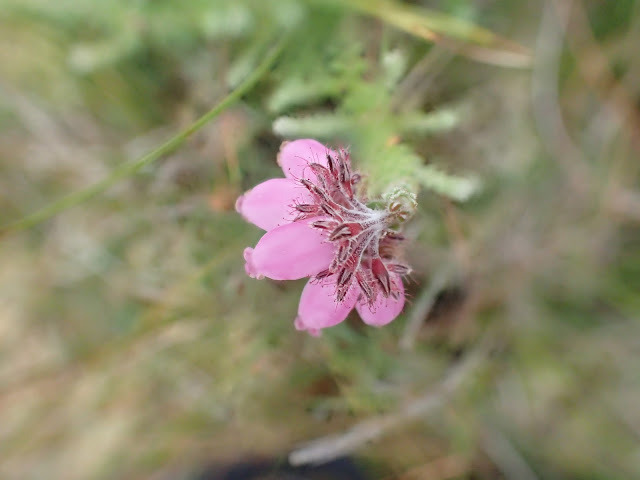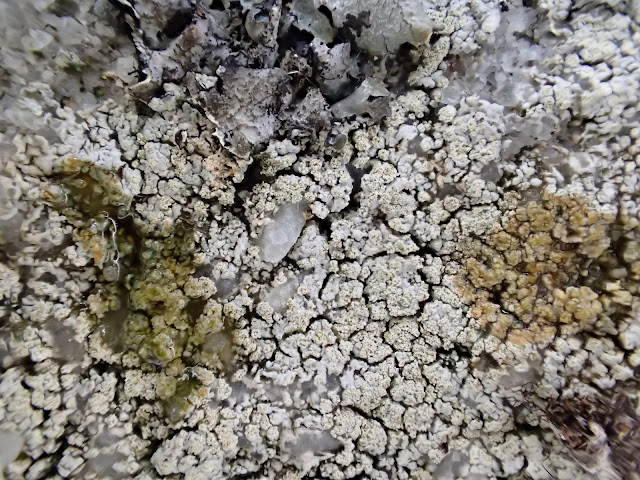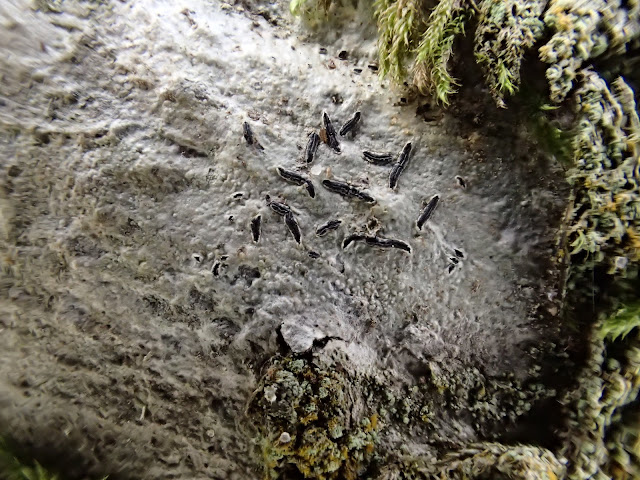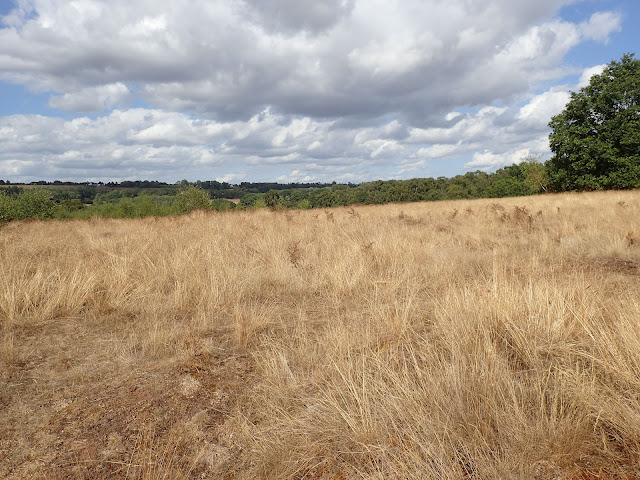- Explanation of Climate Walks
- Prewalk visit (28 Aug) note we are in SD76
- Post walk report (1 Sept)
- Go straight to Lichen Section: Lichens Section -1 (Ochrolechia androgyna and O. tartarea; Lichens Section - 2 (Fuscidea lightfootii - dry and wet and more lichens)

 |
We are at SD7761 - 2.6km to the west of SD86.
Pity. Ah well.
- Explanation of Climate Walks
We from Settle go on a walk on the 1st of each month and stop at a couple of places and have readings about the climate and nature emergency. In two month's time we will have been doing this for 2 years.
Part of the idea of this is to raise awareness. However this summer with the current extreme drought in China, in Kenya, in Europe and the south east of Britain, surely people and governments are aware of the issues? Surely?
The walk is organised by Craven Conservation Group and members of Churches Together in Settle and District, and open to anyone who enjoys a good walk in the countryside.
- Prewalk visit (28 Aug)
"The Walk on 1 September will be to Rathmell Common, beyond Wham. It is 3 miles West of Giggleswick Station. We will meet at 3pm at Settle Methodist Church to share transport. Bring strong shoes. The road is open to the moorland for a short stretch." I announced.
I went up early Sunday evening of 28th plan the walk, so here are a few pictures.
It was ever so peaceful and quiet. As the evening drew closer, sound travels further and I head the noise of traffic on Settle bypass 3 miles away.
I found cranberries, sundew, seven species of Sphagnum (bogmoss) and on the wall, and few boulders, lichens.Up the hill, just 1 mile south west of me Yorkshire finishes, and there is the boundary with Lancashire. (It leads over to Gisburn Forest and Stocks Reservoir,)
 |
| View. Penyghent and Fountains Fell can be seen faintly in the distance |
 |
| Cranberry |
 |
| A very few late Cranberry flowers (normally come out in June) |
 |
| Sundew on Sphagnum papillosum (a bog moss that needs very wet bogs) This Sphagnum is dry-- a sign of the drought - even though we have had quite a bit of rain this past week. |
 |
| Cross-leaved Heath |
 |
| Sphagnum fallax (I think) - a VERY common Sphagnum, but a nice big patch. |
- Post walk report (1 Sept)

 |
| There were interesting soil profiles |
 |
| And birds. |
 |
KOH on the left, C(Bleach) on the right: The KOH really has turned yellow! Ochrolechia tartarea (I think) on the rock and spreading onto the moss on the rock. It has lots of young fruiting bodies. It has no soredia It was great to find these two species - It is the first time I have found them around here... A shame they were not in my hectad SD86. -------------------------------------------------------- |
This wall separating the open moor of Rathmell Common from the adjacent sheep pasture was an obvious home for lichens. (Penyghent and Fountains Fell can be seen in the background).
So I was peering at the very top of the wall and found a patch of Xanthoria ucrainica (a typical bird perch site)
There was an old wooden gate and gatepost
 |
| Gate post - another habitat for lichens. The big one is Hypogymnia tuberculosa Ingleborough and Penyghent beyond in the haze |
On the leached wood of the old gate there was this warty grey lichen with quite big black apothecia - the edges of the black apothecia flowing over the warts or the warts impinging on the apothecia
Then next 1st day of the month is Sat 1 Oct 2022. It is likely to be a "Fungus Foray" walk - maybe starting off along Watery Lane at 9.30am. However this will be decided nearer the time when the state of fungi is seen. So do check with me first





































